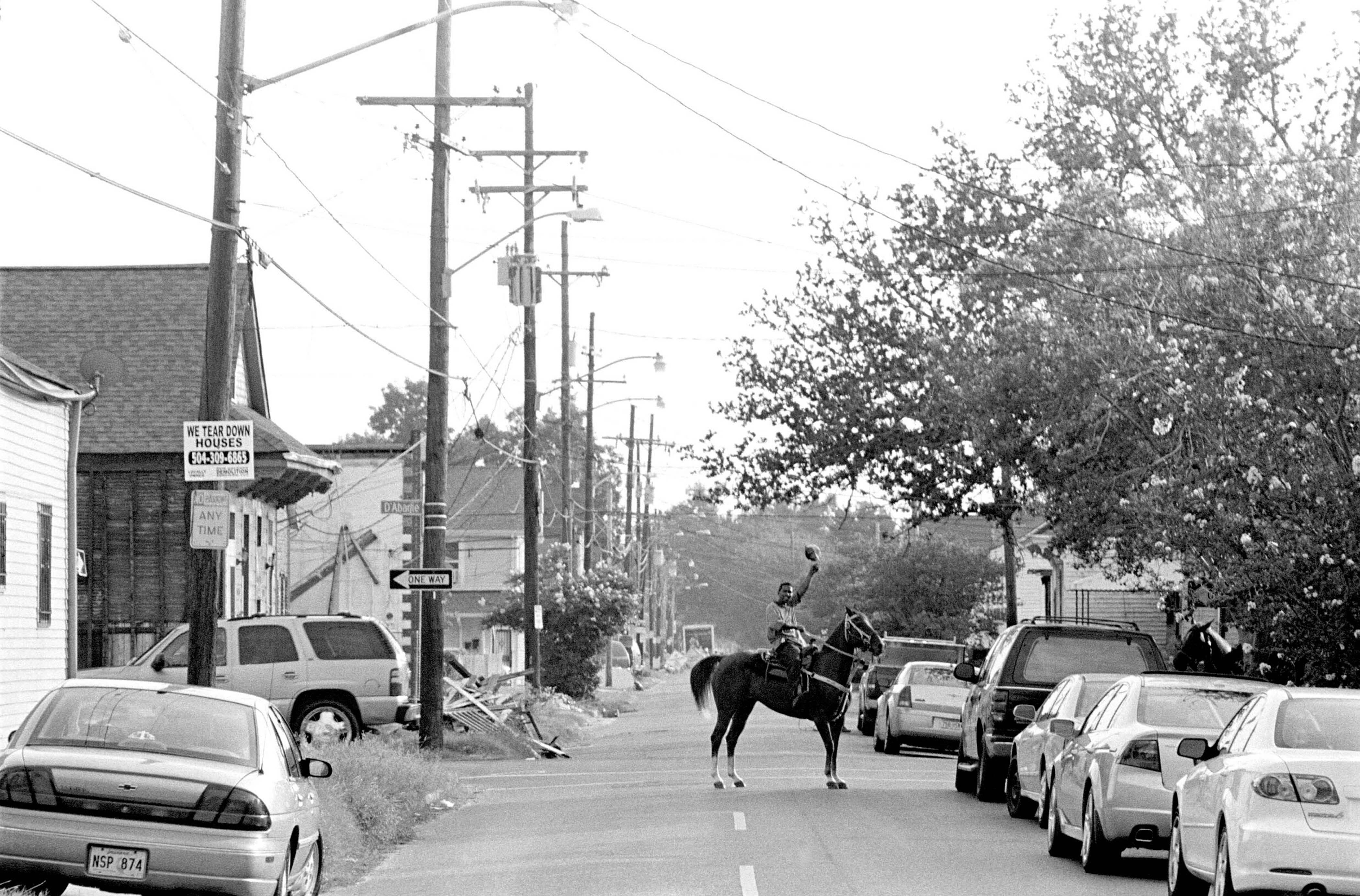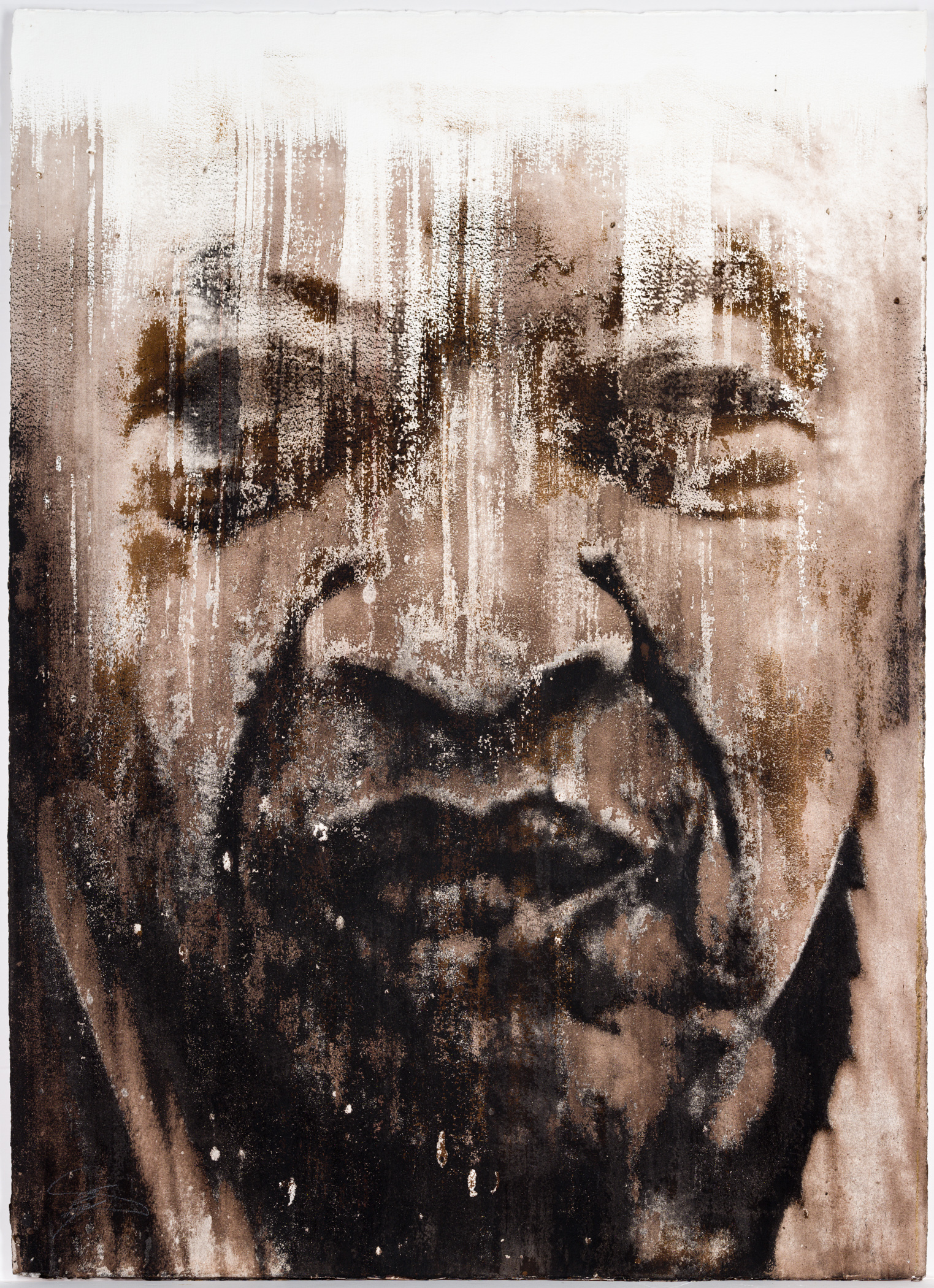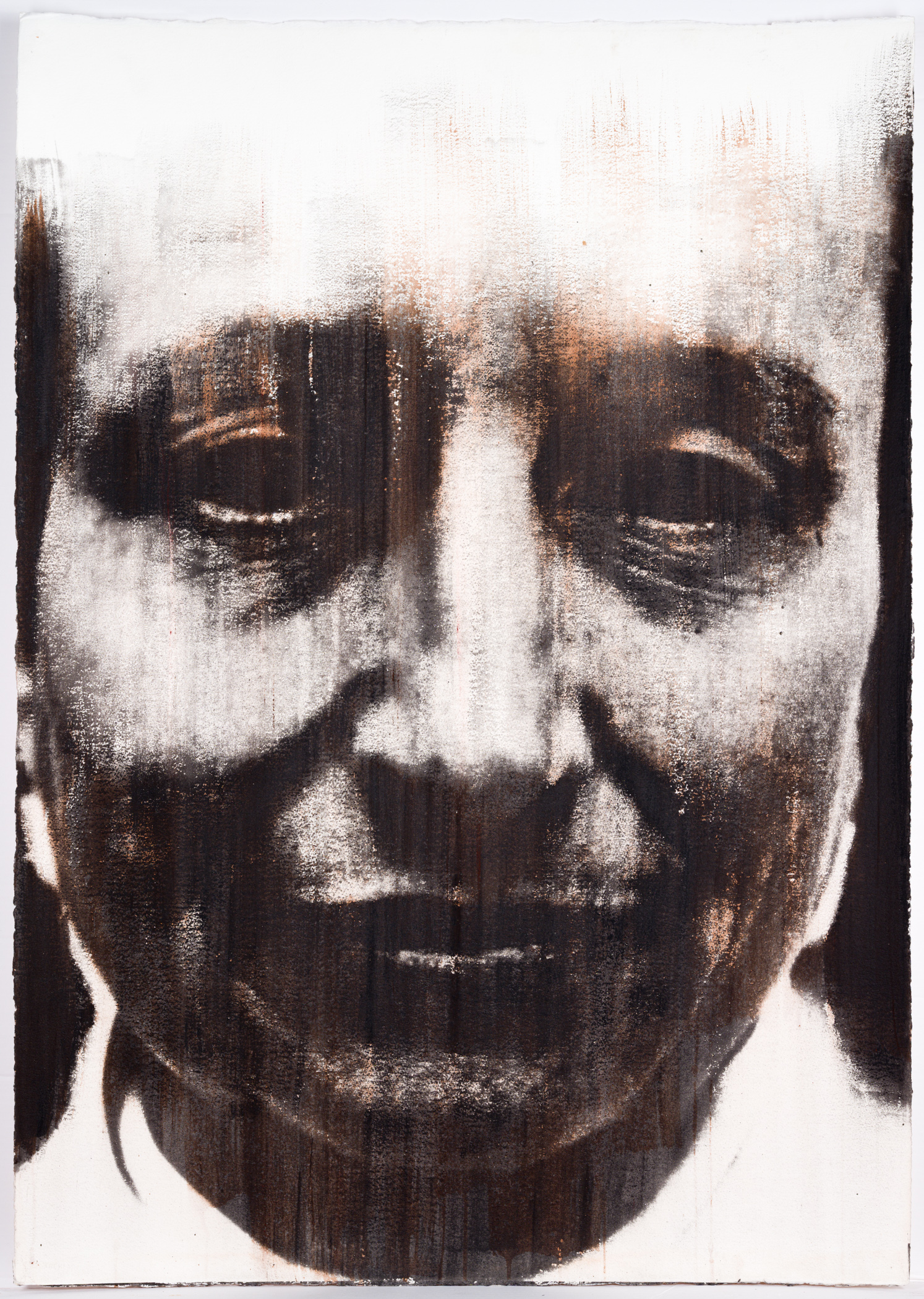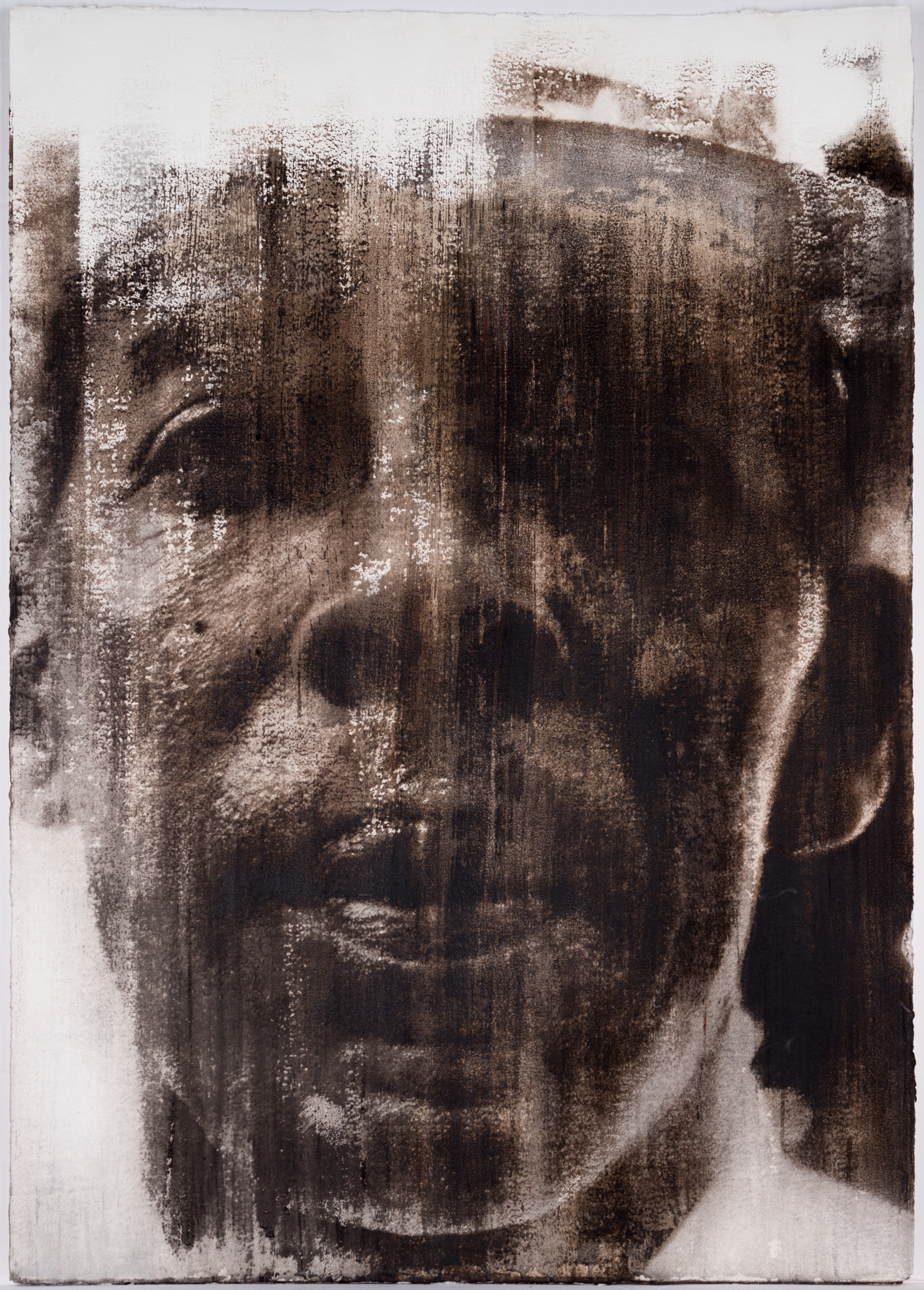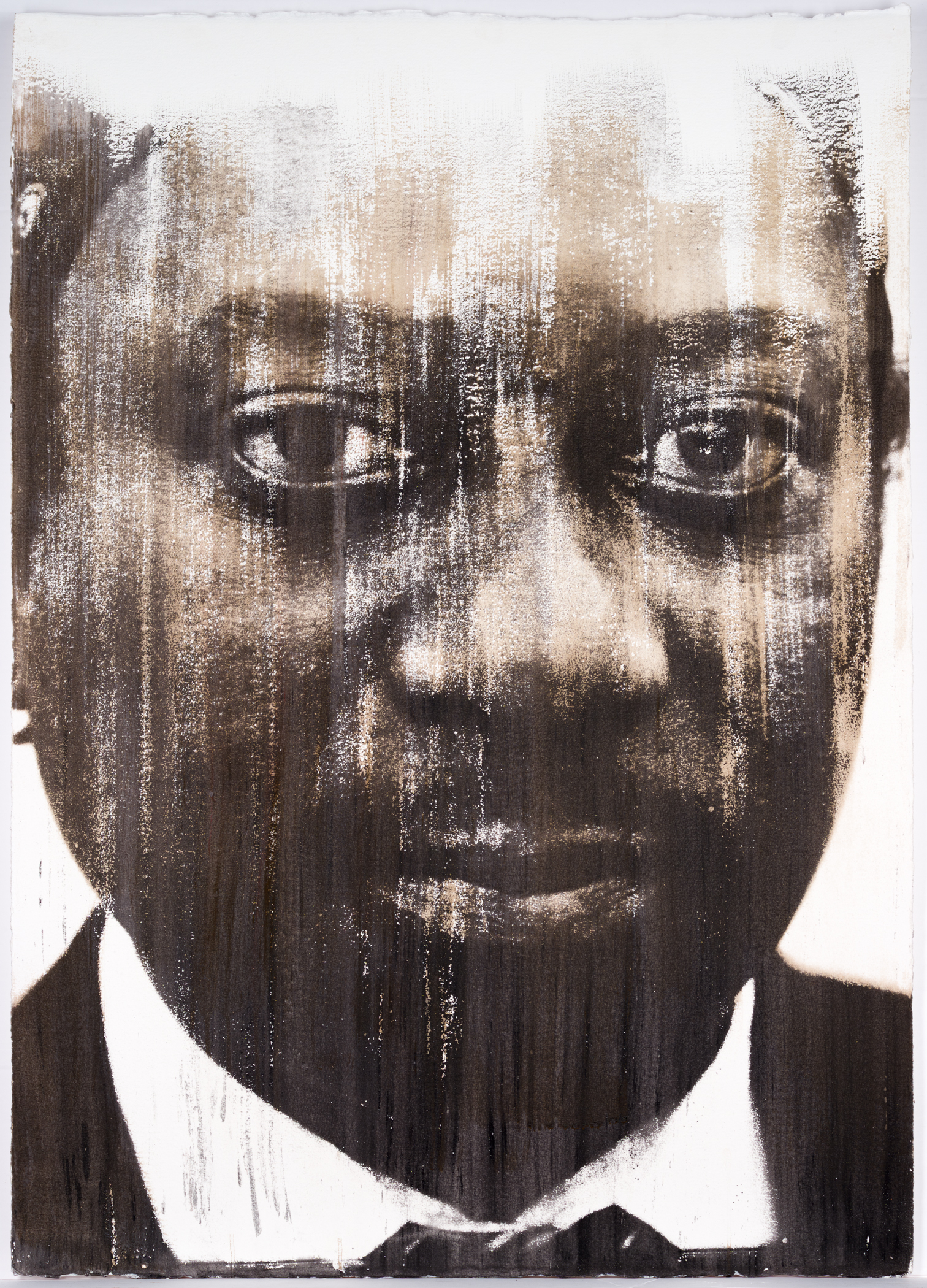Revelations: An Evolution of Introspection
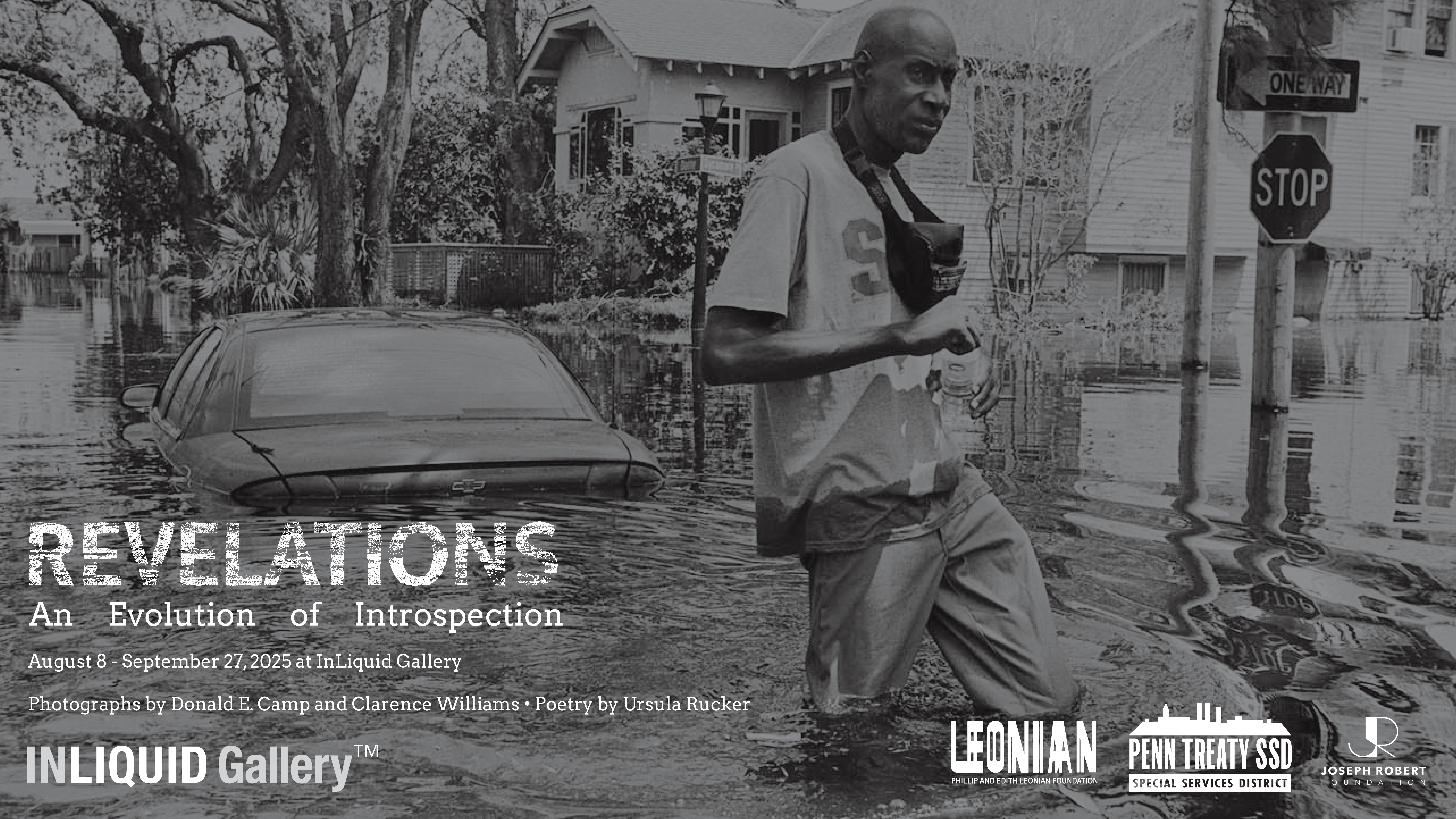
Curated by Lonnie Graham
Featuring photography by Donald Camp and Clarence Williams, and poems by Ursula Rucker.
Opening August 8th until September 27th at InLiquid Gallery, Revelations: An Evolution of Introspection recounts, photographically and poetically, the experiences of those who endured Hurricane Katrina in New Orleans. Pulitzer Prize-winning photojournalist and West Philadelphia native Clarence Williams survived being stranded on a rooftop for three days following the storm, and stayed in New Orleans for thirteen years afterwards to document recovery efforts. Donald E Camp, a Guggenheim Fellow and renowned Philadelphia-based photographer, has developed a series of faces using traces of soil from New Orlean's Ninth Ward, utilizing it in a richly textured earth pigment for his images. This exhibition will also feature Philadelphia poet and spoken word artist Ursula Rucker, who, in collaboration with Clarence Williams, wrote a series of poems conveying the experiences of Hurricane Katrina and its aftermath.
InLiquid is committed to helping produce and highlight the work in Revelations: an Evolution of Introspection as a way of memorializing the past and helping our community avoid similar disasters here at home. Specifically, with global warming, Black and African American individuals have a 10% higher risk of living in areas with the highest projected inland flooding damages compared to reference populations. Here in Kensington, InLiquid serves a historically Black and Latinx population that lives in an area with a significant risk of flooding over the next 30 years, with 37% of all properties in our zip code being designated as “at risk.” Through this exhibition, InLiquid seeks to educate, honor, and prepare.
Proof of Life
Curatorial Statement by Lonnie Graham
Distinguished Professor Emeritus, Pennsylvania State University
20 years ago, I waded through waters in certain quarters of New Orleans.
I had been a visitor there some time before that water, and now find myself coming to continue the conversation with residents of an unimaginable disaster.
The in-depth conversations that I held with many of the residents I encountered as I rendered their portraits, and documented lost belongings, against a surrealistic landscape strewn with trucks in trees, boats on houses, inundated with the smell of loss and carnage, was a complex survey of the human spirit. Those conversations turned into the need, to not only understand or help others understand through the course of my documentation, but to offer assistance to individuals who stayed and suffered through the loss.
I still bear the scars of that engagement.
Nothing can compare with those who have long endured the savage hell of the storm and the aftermath. My scars are internal. I suffer a breathing disorder I acquired wading through mud and water into the wreckage of homes inhaling mold and fumes of unknown origin to rescue the treasures of the occupants of upheaval.
Revisiting those events through the images presented in this exhibition has been to relive the nightmare. Although the difference is profound. Dreams dissipate and are fleeting in the morning light. Dreams don't carry away homes. Or our loved ones, or our treasures or our possessions. Nightmares end.
Revisiting those events through the course of the artists gathered for this exhibition is to acknowledge in some way what we all suffer, what we all know and understand as profound loss. Perhaps it's through this loss and longing that we can gain a deeper understanding of our common experience. Perhaps it's through the words and the song of the poet that we can hear our own spirit resonating in the words of another. Perhaps in the documentation of turmoil we can identify small pieces of loss that many of us know too well or understand what we may need to anticipate in the future. Perhaps in a glimpse of the revelers we can know and understand the resilience of the human spirit. In the rendering of the portraits, we see ourselves and how, despite all, our presence remains. We are not alone.
About the Artists
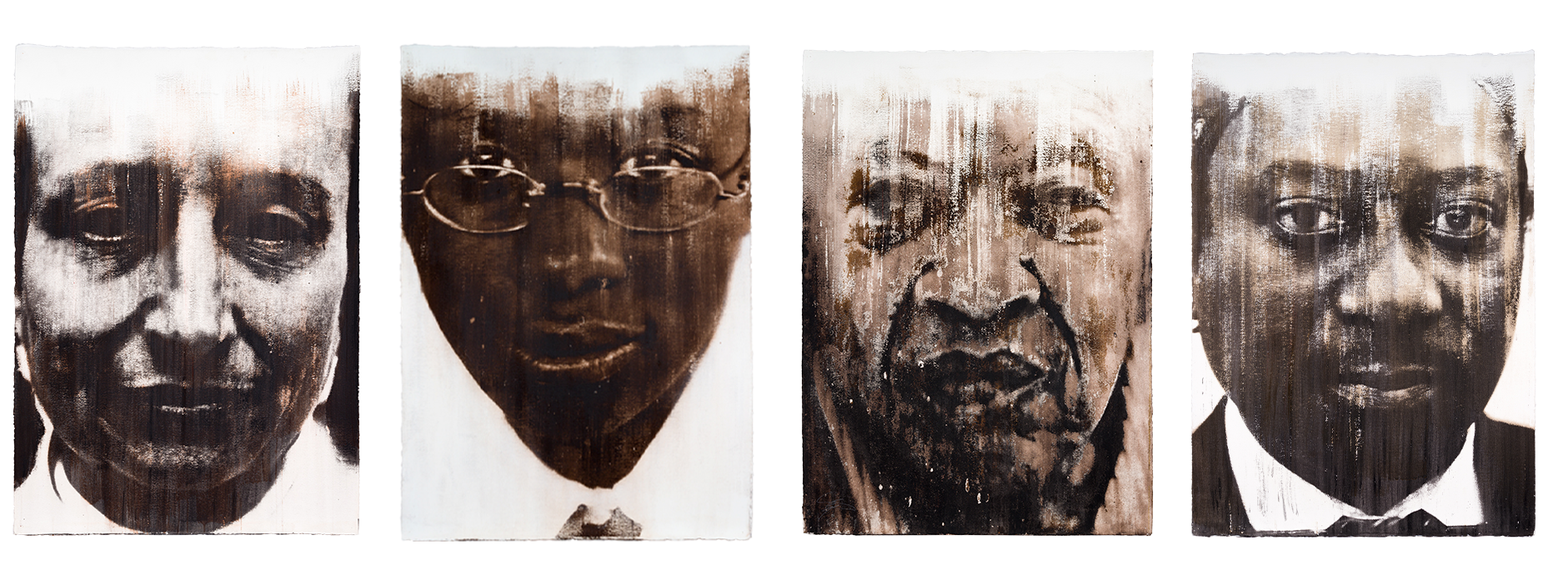
Donald E. Camp
Donald E. Camp has a strong reputation in Philadelphia with his work featured in museum collections and exhibitions in a number of respected institutions there and across the United States. In 1995, Camp was awarded an Individual Artist Fellowship by the prestigious Pew Center for Arts and Heritage solidifying his reputation among scholars, critics, and patrons. He went on that same year to garner awards from the John Simon Guggenheim Foundation and the National Endowment for the Arts. With these endorsements of his work by some of the most important funders in the artistic community, Camp developed his signature work further to expand Dust Shaped Hearts, for which he has become known. Because Camp is a renowned artist and photographer, his work is appreciated and collected by patrons, critics, and institutions interested in photography, contemporary art, and African American artists. He is currently a Professor Emeritus at Ursinus College, where he had been an Artist in Residence for over 10 years and where there is a photography collection in his name.
Artist Statement
"Through insightful prints uniquely created to stand the test of time, Dust Shaped Hearts addresses the universal human struggle against intolerance and stereotype. Melding the subject matter of the human face with a lyrical and organic printing process yields a body of work that investigates history, humanity, and beauty.
Dust Shaped Hearts, as a series, began in 1993 with the purpose of recording the faces of African American men. The project was intended to be a sardonic statement about news reports of the threatened "extinction of the African American male." Drawing upon my experience as a photojournalist, I re-defined the "newspaper headshot," in order to go beyond stereotype and give thoughtful attention and permanence to the men I photographed.
Expanding the scope of these portraits, I photograph the human face (male and female), not because the person possesses a dramatic "photographic" face, but because of the person's character. I photograph writers, artists, judges, musicians, and others. The face is shaped in the darkroom process as I expose and scrub the prints until they convey an authenticity and power. The scale is large (22 x 30 or 29 x 41 inches) to allow the visual language of the materials to be seen. Due to the specificity of each person and my non-reproducible printing method, only one unique print is made of each subject. Each face demands its own solution.
The existence of the Blues has greatly influenced my choice to create a unique photographic process. After researching light sensitive processes, I chose to modify a 19th century casein and pigment process settling on this form because it is more archival than the standard rare metal prints. Using materials as metaphor for the male and female, Dust Shaped Hearts is printed using earth (pigment) and milk (casein). Combining these organic materials to make images parallels my observation that basic photography is biological, not mechanical. In printing, I try to bring the materials together to make them one: the image, casein, and pigment become paper and the paper becomes pigment, casein, and image. Created in this manner, my work seeks to communicate the honesty and sadness of a great blues performance".
Dust Shaped Hearts- NOLA
"In 1989 I heard New Orleans in Israel. Sitting on a bus heading to Haifa, I heard Fats Domino playing on the bus' speaker system. It was then that I realized that New Orleans is the root of music that is America's gift to the world.
In late August, 2005 the city of less than a million people, the city that can rightfully claim to be the root of Blues and Jazz; the city that was the root of music that I tapped my foot to in my teenage years; the city that produced Fats Domino, Allen Toussaint, Dr. John, Jerry Lee Lewis, Louis Armstrong, Mahalia Jackson and many more; the city that taught the world to dance was severely damaged. Hurricane Katrina killed more than 1800 people.
In 2007 I wanted to meet the people who would carry on building NOLA's contributions to the world".

Clarence Williams
Clarence Williams is a Pulitzer Prize-winning photojournalist and multidisciplinary artist whose work is rooted in social justice and community storytelling. With a career spanning over three decades, Williams has consistently used his vision and his voice to illuminate the lives of marginalized communities and advocate for systemic change.
In 2023, he completed his first public art commission for the Los Angeles County Metropolitan Transportation Authority (Metro), a permanent installation at the new subway stop at Second and Broadway in downtown Los Angeles. He also created a piece for the Los Angeles County Department of Arts and Culture commemorating the 100th anniversary of the 19th Amendment, now on permanent display at the department’s headquarters. Williams’ creative journey has expanded beyond photography: though unpublished, he takes great pride in completing his first novel, a personal milestone that reflects his lifelong dedication to storytelling in all forms.
His artistic practice is grounded in lived experience and a deep belief in the power of storytelling to inspire awareness and action. He was previously supported by the Open Society Institute for a long-term documentary project chronicling New Orleans' recovery after Hurricane Katrina. His past roles include Director of Communications for New Orleans City Councilman-At-Large Jason Williams and Head of Photojournalism at the University of Southern Mississippi, where he helped shape the next generation of socially conscious visual storytellers.
Williams’ work has earned some of the most prestigious honors in journalism, including the 1998 Pulitzer Prize for Feature Photography, the Robert F. Kennedy Journalism Award, and NABJ’s Journalist of the Year. He earned his BA in Mass Communications from Temple University. He began his professional career as an intern with the Philadelphia Tribune and York Daily Record before being selected for the competitive METPRO program at the Los Angeles Times, where he served as a staff photographer from 1995 to 2003.
Through all his endeavors—whether in photography, writing, or public art—Clarence Williams remains committed to documenting the human condition with clarity, dignity, and purpose. His work continues to center those often pushed to the margins and seeks to foster deeper understanding and equity through the power of narrative. At the core of Clarence Williams’ practice is a deep, unwavering commitment to documenting the lives of the disenfranchised and telling stories with honesty, dignity, and compassion.
Artist Statement
"As an award-winning photojournalist, professor, artist and father, my creative journey is a testament to the transformative power of storytelling and the enduring pursuit of truth and beauty. Through my work, I seek to capture the complexities of the human experience, from moments of profound joy and resilience to the harsh realities of injustice and adversity. My work reflects a deep reverence for the diversity of the world and a commitment to amplifying marginalized voices and untold stories. As a professor, I have dedicated myself to nurturing the next generation of visual storytellers, imparting not only technical skills but also the ethical responsibilities inherent in the documentary practice. Now, as a father, I draw inspiration from the innocence and wonder of childhood, infusing my work with a sense of hope, empathy and curiosity. My art is a reflection of my identity as a multifaceted individual—a storyteller, educator, and parent—each role informing and enriching the others. Through my images, I invite viewers to pause, reflect, and connect with the universal truths that unite us all, transcending boundaries of culture, language and time. My art is an expression of my unwavering commitment to equity and liberation—a call to action that transcends borders and inspires collective action. Through my images, I strive to spark empathy, provoke dialogue, and catalyze meaningful change, believing wholeheartedly in the transformative power of art to shape hearts, minds and societies"
Ursula Rucker
Poet, recording artist, songwriter, activist and revolutionary Ma’at Mama, Ursula Rucker is a certified veteran of the global music and poetry scene. A skilled writer and dynamic performer, Rucker’s rich and textured voice is one of the world’s great, living instruments.
Born and raised in Philadelphia, Rucker began to share her poetic gifts in her 20s, performing at open mics in the city before two standout recorded performances announced to the world that Rucker was an emerging force to be reckoned with.
In 1994, Rucker broke out performing a memorable lead vocal for “Supernatural”, the classic House tune by DJ King Britt side-project, Firefly. The song remains a dancefloor classic today. That same year, Rucker would record a jaw-dropping performance on The Roots “The Unlocking”, the closer from their ground-breaking full length Do You Want More?!!!??! Today, Rucker enjoys a standing as a respected poet, writer and vocalist.
For nearly 3 decades, Rucker has used her fiery prose and invigorating imagery to excite and inspire listeners around the world. In addition to her performance on HBO’s Def Poetry Jam, Rucker has established herself as a top-tier recording artist. Her solo albums are brimming with power and wide-ranging musical diversity, including Supa Sista (2001), Silver Or Lead (2003), Ma’at Mama (2006), Ruckus Soundsysdom (2008), She Said (2010), and No Stranger Here, her 2011 collaboration with Shubha Mudgal and Business Class Refugees. Rucker has built an equally impressive catalog as a collaborator, working with everyone from The Roots, 4Hero, Jazzanova, Louie Vega, Doodlebug of Digable Planets; and many more. A versatile artist, Rucker can be heard on dancefloors across the world, as the voice of many House and Dance music classics. Rucker currently has over 300 tracks on the Beatport charts and was selected as a Top vocalist of 2020 by the popular Dance music site Traxsource.
In 2013, Philadelphia’s Mural Arts Program commissioned the artist Jetsonorama to create You Go Girl, a massive, building-sized portrait of Rucker and in 2021, her new mural entitled “We Still Here”, also by Jetsonorama, was dedicated in her own Germantown neighborhood. She has toured with her live performance memoir, My Father’s Daughter, which she describes as “90 minutes of self-truth and discovery.” She is a recipient of the prestigious fellowship award from The Pew Center for Arts & Change. In 2020, she released big/small poems for pockets, a chapbook of haikus. In 2021, Ursula collaborated with artist Vince Fraser on his exhibit Ase Afro Frequencies which debuted at Artechouse Miami.
At the close of 2022, Ursula had the distinct honor of being selected for the Philadelphia Cultural Treasures Fellowship, recognizing her continued commitment to the advancement of art, and artist advocacy, and an endorsement from her community that her legacy is essential to the cultural fabric of Philadelphia.
Whether she’s on the stage, in print, or on record, Ursula Rucker is an artistic force of nature.
Revelations: An Evolution of Introspection is supported in part by Penn Treaty Special Services District, the Phillip and Edith Leonian Foundation, and The Joseph Robert Foundation.

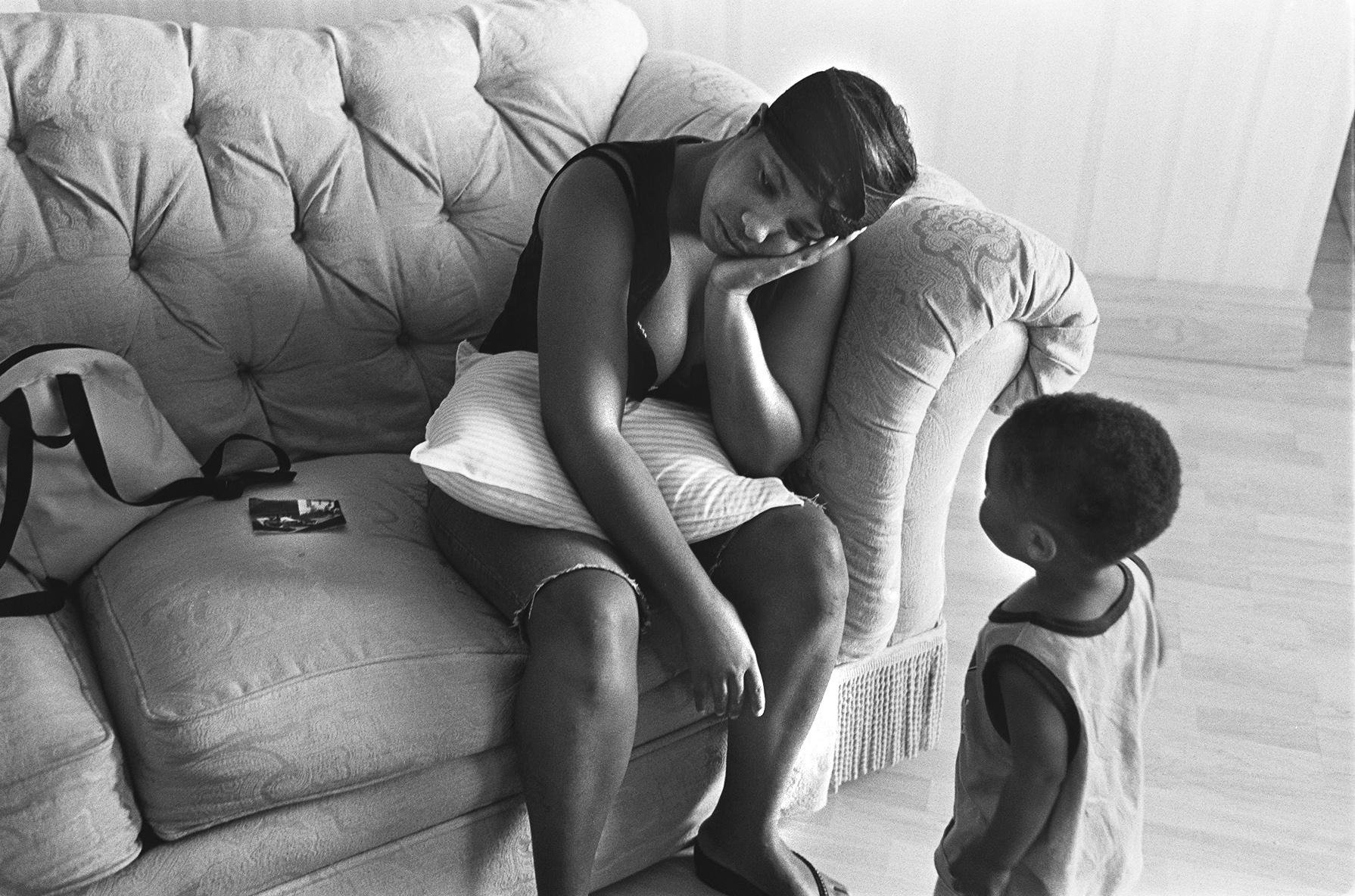

.jpg)
.jpeg)
